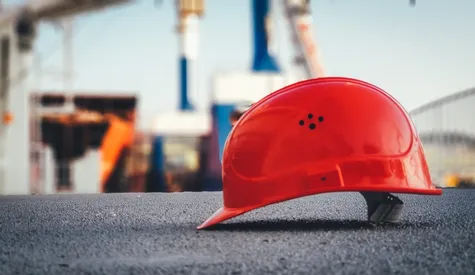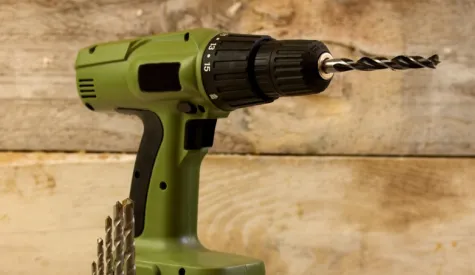Understanding Safety Leadership for CEOs & Management Teams

"I’ve heard that ‘safety starts at the top’, right? Well, I’m at the top—can you help me understand what that means?"
That was the question a CEO recently asked me.
This question is like winning the lottery for a safety professional, and it’s an incredibly intelligent question for a leader to be asking.
For the safety professional, having a leader acknowledge that workplace safety success begins with corporate leadership’s advocacy, is the often unrealized dream of the profession. In 20 years of this practice, I have yet to attend a conference that doesn’t have at least one break-out session titled How to Get Corporate Buy-In, or some iteration thereof. Numerous articles are written about it because this problem remains a serious pain-point for Environmental Health & Safety professionals. Why? Management support is directly connected to their success in creating a safe-minded culture.
The second part of the CEO’s question, “Can you help me understand what that means?” is not a failure on the part of leadership.
The vast responsibilities falling on the shoulders of a leader or leadership team are immense, and it’s impossible to know all the details of the work delegated to others you trust to serve as protectors of your workforce.
So as a leader, what do you need to know in order to ask intelligent questions, determine if the work is being done, or measure progress?
Let’s start with what I call the 4-Pillars of Safety. Each pillar covers one of the minimum expectations for employers with regard to workplace safety. Should you be audited or vetted by an insurance carrier, you will be evaluated on these 4 pillars at a minimum.
Here’s a series of challenging questions to ask the person or department tasked with responsibility for workplace safety. Their answers will help you determine if you are ahead, behind, or on the curve of compliance, whether or not you have the correct people in place, the right number of people on your team, and what resources or training is necessary to take control and move the needle of occupational safety and health.
Pillar One
Written Programs
- Regarding written safety programs, policies, procedures, and evaluations, currently in place for various working environments, what percent are complete and up-to-date?
- How did you determine which we needed in order to be compliant?
- Provide me with a list of written programs we have completed and up-to-date, along with those needing updates, and those which we do not yet have in place.
- What resources do you need or are missing to support this work?
Pillar Two
Employee Training
- Regarding the topics we are required to provide safety training for, how are we training employees? What percent of training topics have materials in place now, or an online safety training solution? How do you know if the resources we are using cover compliance with regulatory standards?
- How did you determine which training topics are necessary for compliance?
- Which topics are we currently training our employees on and how often?
- Which training topics are we missing, and what needs to be updated?
- What percentage of employees has received safety training?
- Tell me about our training records. How are they maintained, what format is used, i.e., paper files, spreadsheets, cloud-based? Are they quickly accessible to an auditor, do we have historical records, and who has access to them when needed?
- What resources or training do you need to support this work?
Pillar Three
Hazard Identification & Correction
- What method(s) do we currently use to identify physical hazards and how often?
- What method do we use to ensure occupational safety hazards are corrected and who has the authority & budget to correct hazards?
- Who generally identifies hazards and do they need training to help them know what to look for?
- Do you ever have difficulty getting hazards corrected? Are you met with resistance, or lacking authority or budget if the correction requires an expense?
- Are inspection records kept for safety audits and things like fire extinguisher and eye wash station inspections?
- If you had to give us a confidence grade for knowing how to identify hazards here, or knowing what to look for, how would you grade us?
- What resources or training do you need to support this work?
Pillar Four
Safe Workplace Behavior
- Do we practice what we preach? If we are training employees how to work safely and providing rules around safety and safety equipment, are supervisors, managers and lead workers modeling that behavior?
- Do we have a system in place to document unsafe behaviors the same as we would for work attendance, as an example? If we are documenting, are those records kept with our Human Resources department?
- What resources, support, or training do you need to support this work?
Finally, ask for your workers compensation data so you can see where you’ve been, where you are, and what is on the horizon.
Here are some questions to get you started:
- How much money did we spend on workers compensation each year for the past three years? Where are we year-to-date (YTD)?
- How much did we spend on premiums, administrative fees, all treatment expenses and lost-wage benefits (if self-insured) each year for the past three years? Where are we YTD?
- What are our top three most frequent types of injuries? Historic and YTD
- What are our top three most costly types of injuries? Historic and YTD
- Do we have any pending legal cases on the horizon and what are our projected expenses?
- How does all this data compare to others in our industrial classification code; Standard Industry Classification (SIC) or North American Industry Classification System (NAICS)?
In sum:
It is my belief that these questions about each of the 4-Pillars of Safety pillars, when combined with workers compensation data, will provide you with enough meaningful data to draw conclusions on where your leadership is needed, to what extent, and help you determine whether or not you have the correct systems and people in place to protect your most important asset—people.
Learn more about workplace safety training.


